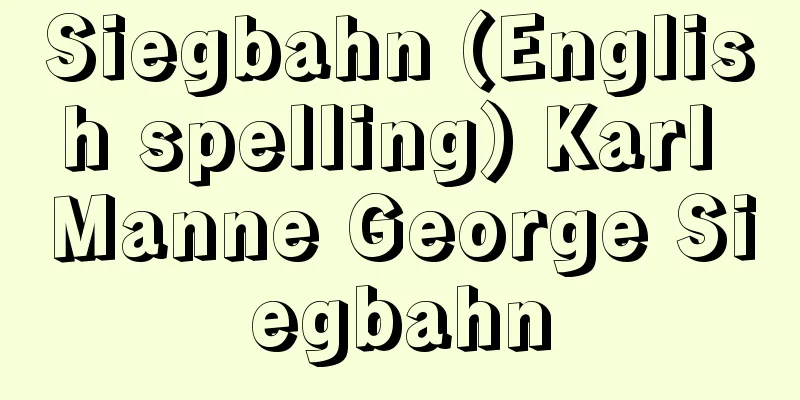Li Lissan

|
Chinese politician and labor movement leader. Born in Hunan Province. In 1920, he studied in France as a member of the Association of Workers and Frugal Workers in Law, and together with Zhou Enlai and others, he founded the Paris branch of the Chinese Communist Party. He returned to China in 1922. During the May 30 Incident in 1925, he led the movement as chairman of the Shanghai Federation of Trade Unions. He then attended the Profintern Congress in Moscow as a representative of the All-China Federation of Trade Unions, and returned to China the following year in 1926. In 1927, he became a central committee member at the 5th Congress of the Communist Party of China, and then participated in the Nanchang Uprising. From 1928, he was active in Shanghai, and as a central leader of the Communist Party of China, he implemented an ultra-left line that emphasized armed uprisings in cities, leading to great casualties. This so-called Li Lisan line was criticized by Comintern and Wang Ming, and he was called to Moscow to study until 1946. During that time, he translated many Marxist documents under the pen name Weizhen, and was elected a central committee member at the 7th Congress of the Communist Party of China in 1945. After returning to China, he became vice chairman of the All-China Federation of Trade Unions in 1948, and was appointed Minister of Labor of the Executive Council when the People's Republic of China was established. However, he resigned in 1954 due to mistakes in labor union leadership, and at the 8th Congress of the Communist Party of China in 1956, he criticized himself for "making the error of subjectivism and factionalism." He was re-elected to the Central Committee at the same conference, and became deputy director of the Party Central Industrial Work Department in 1959, but he was criticized again in the early days of the Cultural Revolution, and died in despair. [Ando Hikotaro] [Reference items] | | | |Source: Shogakukan Encyclopedia Nipponica About Encyclopedia Nipponica Information | Legend |
|
中国の政治家、労働運動指導者。湖南省出身。1920年、留法勤工倹学会の一員としてフランスに留学、周恩来らと中国共産党パリ支部を結成、1922年帰国。1925年の五・三○事件では上海(シャンハイ)総工会の委員長として運動を指導した。そのあと中華全国総工会代表としてモスクワのプロフィンテルン大会に出席し、翌1926年帰国。1927年、中共第5回大会で中央委員、ついで南昌蜂起(なんしょうほうき)に参加、翌1928年から上海で活動、中共の中心的指導者として、都市の武装蜂起を重視する極左路線を実行し、大きな犠牲を出すに至った。このいわゆる李立三路線はコミンテルンや王明らの批判を受け、モスクワに呼ばれて1946年まで学習、その間、唯真という筆名で多くのマルクス主義文献を翻訳、1945年の中共第7回大会では中央委員に選出された。中国に戻って1948年中華全国総工会副主席となり、中華人民共和国成立とともに政務院労働部長に就任した。しかし、労働組合指導で誤りを犯したとして、1954年辞職し、1956年の中共第8回大会では「主観主義、派閥主義の誤りを犯した」と自己批判した。この大会で中央委員には再選され、1959年党中央工業工作部副部長についたが、文化大革命の初期にまた批判を受け、失意のうちに死去した。 [安藤彦太郎] [参照項目] | | | |出典 小学館 日本大百科全書(ニッポニカ)日本大百科全書(ニッポニカ)について 情報 | 凡例 |
>>: Yi Yul-gok (English spelling)
Recommend
Fenshui (English spelling)
The second largest tributary of the Yellow River, ...
Kinetic energy
A point mass of mass m moving with a velocity v h...
Kumano faith - Kumano faith
The faith, centered on the Kumano Sanzan, became ...
Lomi, O. (English spelling) LomiO
…Italian painter. His real name was Orazio Lomi. ...
Huánuco (English spelling)
The capital of Huánuco Department in central Peru....
Darjeeling - Darjeeling (English spelling)
A tourist and resort city in northeastern India, ...
Cardin, Pierre
Born: July 7, 1922, San Biagio di Calalta, Italy [...
Arunshitam, L.
...All films were made solely for the purpose of ...
Rhododendron aureum (English name) Rhododendronaureum
…[Masaaki Kunishige]. … *Some of the terms mentio...
plerocercoid
...In this parasite, the coracidium formed in the...
Toquepala (English spelling)
A cave ruin located on the southernmost coast of P...
Ichinomiya [town] - Ichinomiya
A former town in Higashiyatsushiro County in centr...
Russet sparrow
...From autumn to winter, large flocks of several...
Senecio articulatus (English spelling) Senecioarticulatus
…[Ichiro Sakanashi] [Hiroshi Yuasa]. … *Some of t...
Mustard pickles - Mustard pickles
… [kinds] By type of ingredient, vegetables are t...









